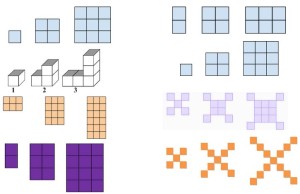So this week was the first week teaching as a father! As excited as I am about fatherhood, I’m not yet going to try to flood the interwebs with pictures of my child. Well, maybe just this one.
Hey #probchat! Labor results were very positive! Thanks @MFAnnie for holding it down. Time for a diaper change… pic.twitter.com/KYnbBQLp5O
— Carl Oliver (@carloliwitter) June 1, 2015
Being a father is good, and perhaps I will write a post soon about what my early experiences made me think about math teaching. Our school district’s paternity leave policy, however, isn’t good. In fact it’s non-existent. In order to keep our lights on I’m back to work until the end of the year. Since NYC schools go DEEP into June. Seeing the year is far from over, I figured I could use the rest of the year to dive in with the blogging strategy I will use next fall
What I’m teaching this week
This week I have to pick up the pieces from my paternity leave. This has meant rushing through the two projects I have my two classes teaching right now.
Project A: The Casino Carnival Project
Kids need to find the expected value for a carnival of their design where they need to make as much profit as possible off of the participants playing the game. This game is meant to model the role probability plays in designing a casino. There is plenty of variability with each of these ideas that should give the students a chance to each make a unique set of games of prizes. Kids calculate the expected value of various prizes and use it to calculate their total profit.
Project B: The “Coin Flip” Project
This project was an obvious copy of Dan Meyer’s Will It Hit The Hoop. I wanted to try a 3-Act kind of problem, as per my goal for this year, and also have kids to do shoulder some of the model building load. I showed them this video of me flipping a coin off of the end of a ruler but not quite landing and asked how they could know it was a quadratic, then guided them through making their own video. The day before my daughter was born I showed them how they could each flip their own coins and record it on an iPad and then find coordinates that track their flight by watching their video and analyzing the associated chart paper.
What I think happened with the subsitute teacher while I was on paternity leave was, well, very little. I realize that there are a lot of teacher moves and questioning that I do when launching projects, and I could probably benefit from taking time to think about what’s needed to teach a project and document it. This may be a summer project… In the mean time, let me know if you have any questions about these quickly describe projects in the comments below.
What I’m blogging this week
This week I plan to blog every day, just as I would if the school year were started. I have plenty of ideas on tap that I could blog about, but I definitely want to write about what happens as I try to finish these projects in a tight timeframe.
I also intend to make a concerted effort to comment on other peoples blogs. So many people out there are writing good stuff, but because I am on my phone, or on feedly, or am just busy, they won’t know that I appreciated their stuff. This week, and certainly going forward, I hope to change that. A comment a day may be a good goal. Anyone care to join me? Leave a comment below to start!
What I’m thinking this week
I’m going to end this post thinking about my former student Kalief Browder, whose life came to an untimely end. The kind of student that should be saved by our system was lost, largely because of this system. The fact that the bevy of resources afforded him later in life weren’t enough to overcome the damage done to him earlier is a sad reminder of the importance of each day with our students while they are young.




